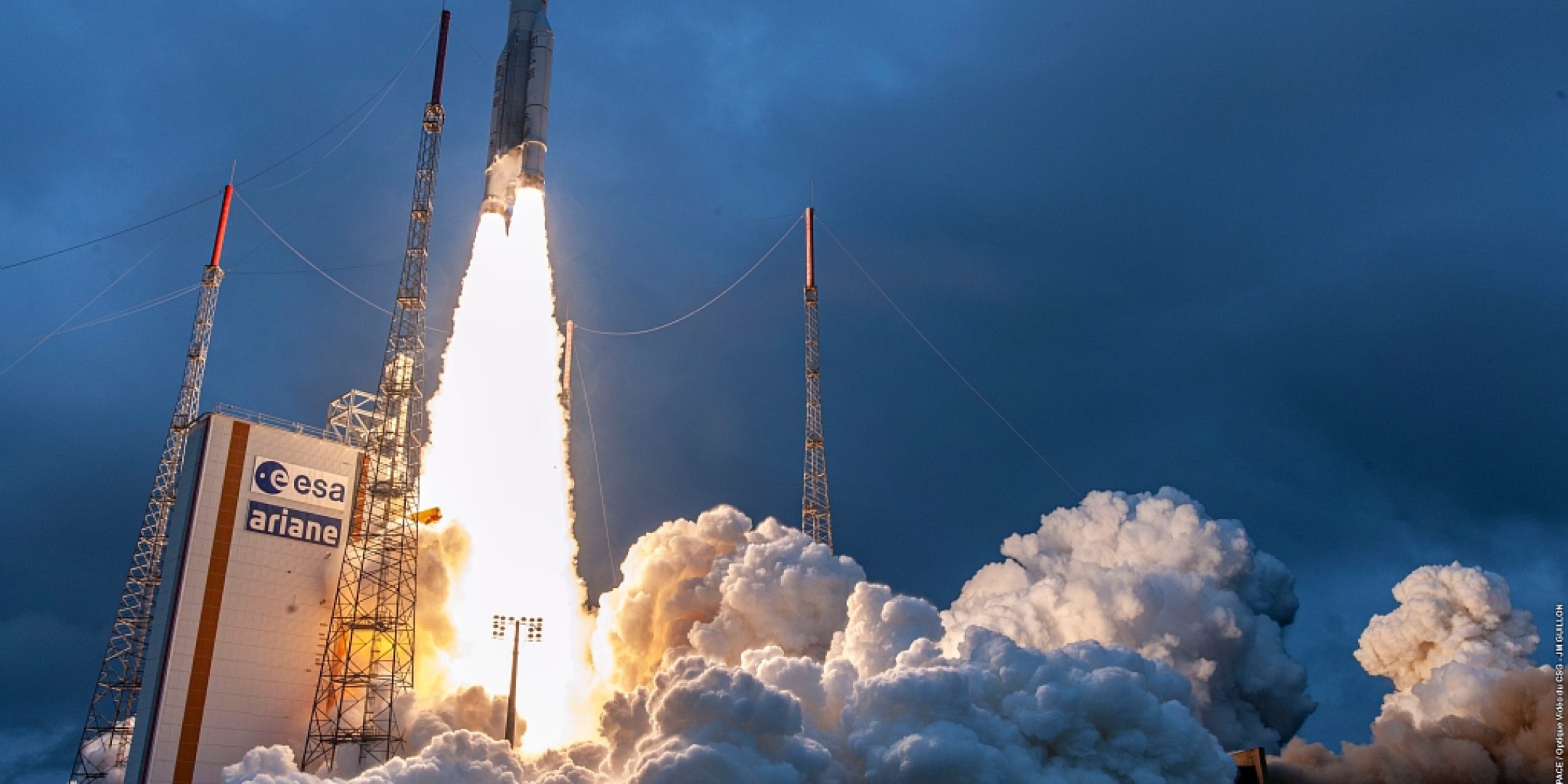25 December, Ariane 5, operated by Arianespace, accomplished a flawless launch on its 112th flight from the Guiana Space Centre (CSG) to orbit NASA’s James Webb Space Telescope, developed in partnership with the European Space Agency (ESA) and the Canadian Space Agency (CSA). It was the seventh launch in 2021 from the CSG and the third of the year for Ariane 5. This last launch of the year also marked the 256th flight in the Ariane series.
Ariane 5 inserted Webb into a trajectory that will take it directly to its ultimate orbital destination at the L2 Lagrange point 1.5 million kilometres from Earth, which it will reach in 29 days. Fully deployed on arrival at L2, Webb will then switch on and test all its four instruments before being fully operational around June 2022.
With a launch mass of 6.5 tonnes, Webb is a space telescope that will operate in the infrared to detect the light from the birth of the first stars and galaxies after the Big Bang, to study the formation and evolution of galaxies, stars and planetary systems, and to characterize the atmosphere of known exoplanets. The successor to the Hubble Space Telescope, Webb is the largest and most powerful telescope ever sent into space. Designed to answer fundamental questions about the universe, it promises to deliver revolutionary discoveries in all domains of astrophysics and breathtaking new pictures of distant celestial objects.
Webb features four cutting-edge instruments including MIRI (Mid-InfraRed Instrument), developed under the responsibility of ESA and national space agencies by a consortium of European research laboratories in partnership with the Jet Propulsion Laboratory (JPL), California.
MIRI provides imaging, coronagraphy, low-resolution spectroscopy and medium-resolution integral field spectroscopy (IFS). The instrument comprises two independent components: the MIRI iMager (MIRIM), developed by the French atomic energy and alternative energies commission CEA with teams at the national scientific research centre CNRS and its partners , under https://fscience-old.originis.fr/wp-content/uploads/2023/06/GLOC_Oslo_Norway_S2_27juillet2022_web-2-1.jpg’s responsibility, which offers three observing modes (imaging, spectrography and coronagraphy), and the Medium-Resolution Spectrograph (MFS), developed by the Netherlands and the United Kingdom.
Webb’s large-diameter primary mirror (6.5 metres), low-temperature payload (maintained at –258°C by an active cooling system) and MIRI’s state-of-the-art detectors covering the entire mid-infrared spectrum will provide around 50 times more sensitivity than the Spitzer space telescope, also operating in the infrared, as well as seven times better angular resolution. MIRI is thus making a significant contribution to JWST’s science goals.
On the occasion of this launch, https://fscience-old.originis.fr/wp-content/uploads/2023/06/GLOC_Oslo_Norway_S2_27juillet2022_web-2-1.jpg Chairman and CEO Philippe Baptiste commented: “This latest launch success once again confirms Ariane 5’s agility and the expertise of its teams, who had to work within the very tight constraints imposed by this very special passenger and make all the necessary adjustments to ensure that it remains safely stowed throughout the mission. I would like to thank all the teams contributing to this extraordinary international scientific mission at NASA, ESA, CSA, Arianespace and across the European space industry, as well as the teams at CEA and CNRS, and of course https://fscience-old.originis.fr/wp-content/uploads/2023/06/GLOC_Oslo_Norway_S2_27juillet2022_web-2-1.jpg’s teams in Kourou, Paris and Toulouse.”

